Holiday and work stress? Traffic chaos and noise? You need some time out, and I have just the “zen” for you. Visiting The Kampong will make you forget all the craziness in the real world and restore you in an instant. As soon as that entrance gate opens up, you can feel The Kampong working its magic.
Sure, there are plenty more exciting and larger estates to visit in Miami, such as the Deering Estate and Vizcaya, but if you want to escape the crowds for a couple of hours and just enjoy a peaceful, tranquil and historical setting in beautiful lush gardens then The Kampong is perfect for you. I absolutely loved it. A big shout-out to the Florida Rambler, which is where I heard about The Kampong first.
What makes it so much more fun and adds a little mystery: you have to actually call in advance to be let in, and then announce yourself at the gate when you get there…
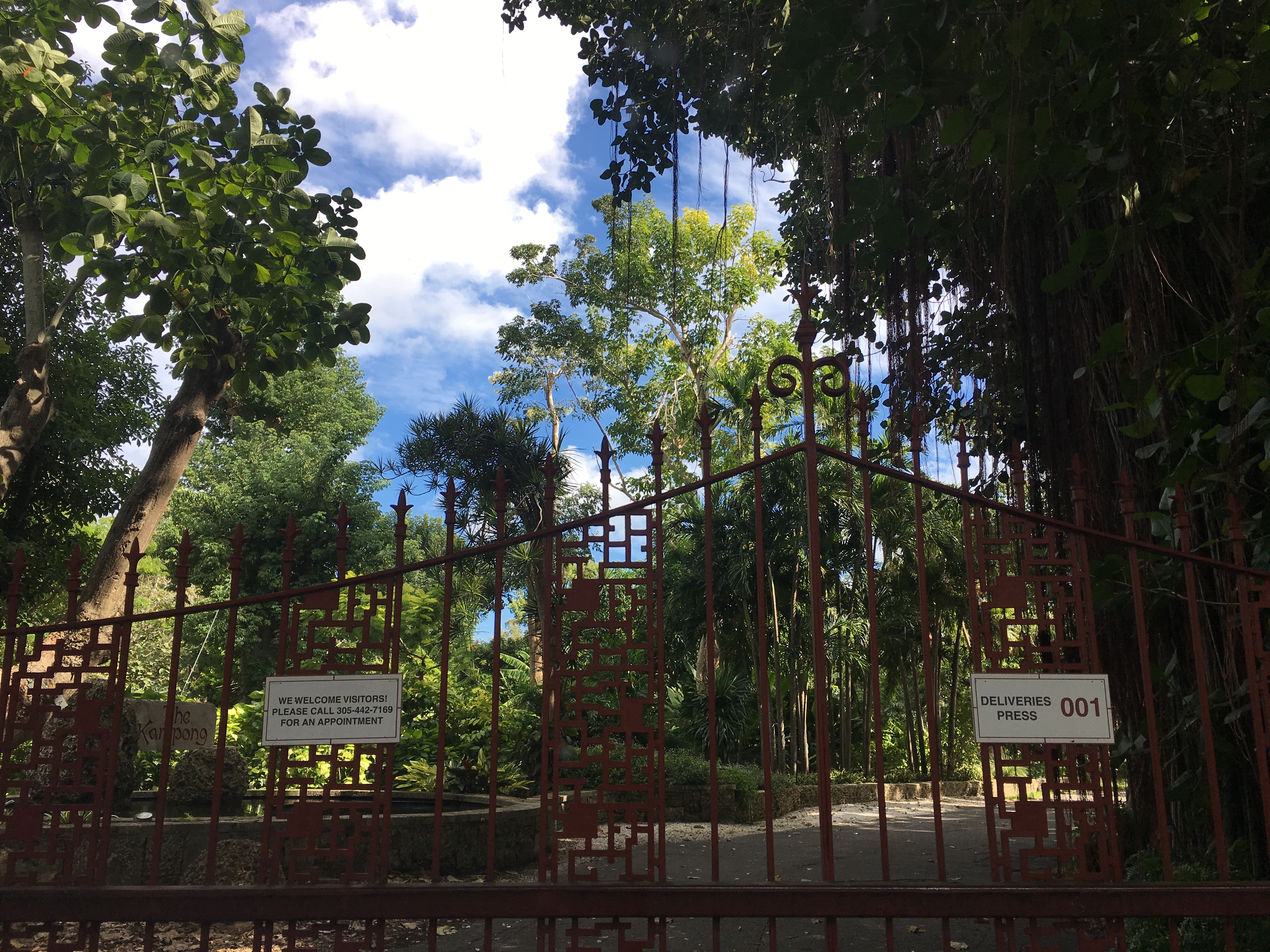 The Gate at The Kampong Estate
The Gate at The Kampong Estate
After (hopefully) being let in, you drive along the driveway and at the end a member of staff may meet you – such as was the case with us – and direct you to a parking spot. Made us feel like VIPs. It also assured me that I wouldn’t find crowds here, which is always a bonus in my opinion.
So what’s this exotic sounding place all about?
History of The Kampong until the present day
The interesting history of the property begins with David Fairchild – yes the famous botanist – and his wife Marian, who purchased the property in 1916. He named it “The Kampong” (the Malay word for small village) and began to plant species that he had collected throughout his travels, particularly plants from Southeast Asia.
When David Fairchild retired in 1928, he and his wife made The Kampong their permanent home until their passing. David Fairchild died in 1954 and his widow continued to live in the property until her death in 1962.
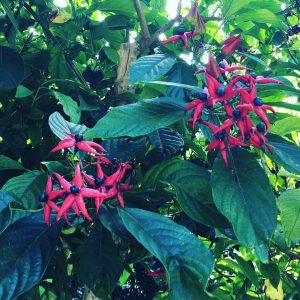
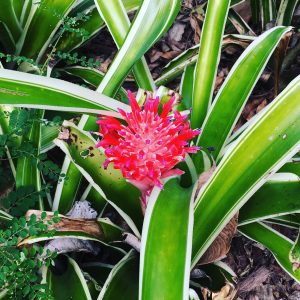
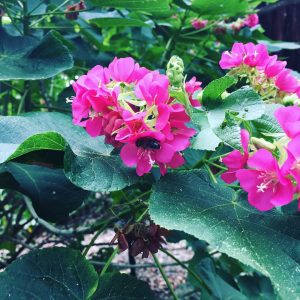
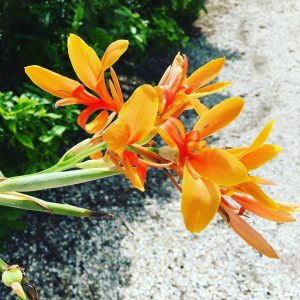
Just a few of the blooms on the property
Luckily for all of us, the next owners of the property, Edward and Kay Sweeney, understood the importance of The Kampong. The Sweeneys purchased the property in 1963 and Kay Sweeney, in particular, took steps not only to preserve the gardens and home, she also improved both. Mrs. Sweeney was also instrumental in having the property placed on the National Register of Historic Places. The Sweeneys eventually deeded the property to the non-profit National Botanical Garden.
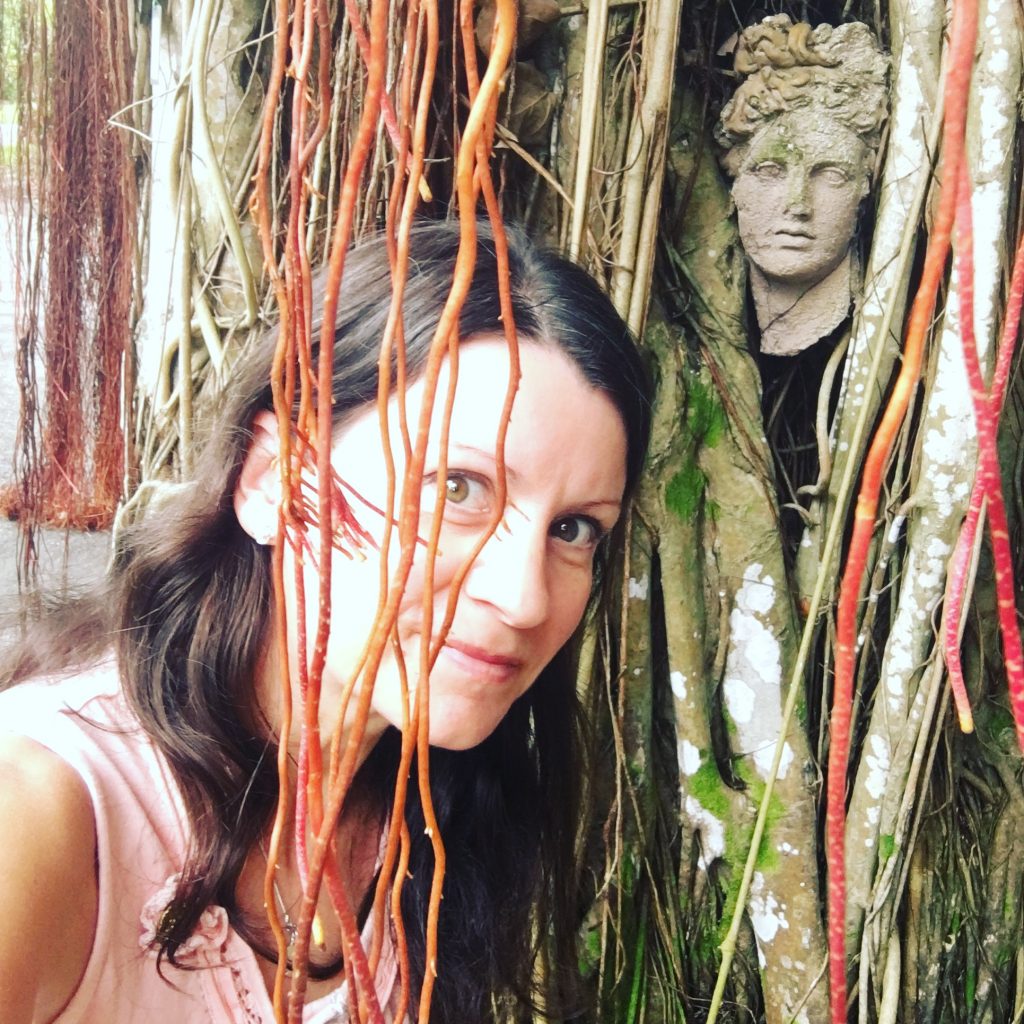
There are surprises – such as this lady in a tree
The Kampong estate is now an educational center for undergraduate, graduate and professional courses. It is also a site where conferences and lectures are held for educators and scientists. Topics often focus on the role plants play in our lives and the challenges of protecting biodiversity and the environment generally. Of course, The Kampong is also open for the enjoyment of the general public.
What is there to see at The Kampong?
There is quite a bit to see but as it is such a small site it pays to take the time to explore it to its fullest and “hang out”. Why not take a little picnic to enjoy just a little more time in this tranquil little gem?
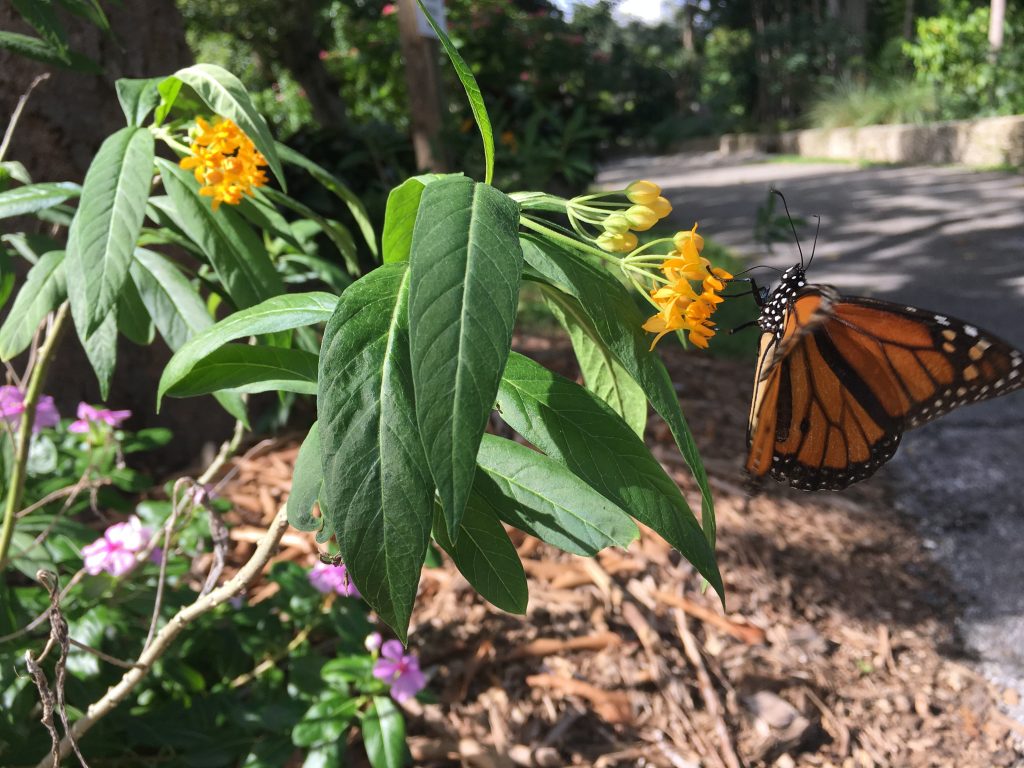
Although we didn’t take a picnic, we definitely took our sweet time enjoying the gardens and property. First of all, we walked back on the driveway which we entered by car, wanting to get a good look at the many trees, bushes and bromeliads lining the way. There were lots of butterflies out also on a very warm November day.
We recognized some mango trees, avocado trees and also some citrus varieties, and there are other non-native trees also. I loved the huge Banyan tree at the entrance with the sculpture of a woman’s face in it.
Don’t forget to look up and you might just see a big beehive. Our little friends are certainly busy pollinating The Kampong plants as well as those of the neighbors!
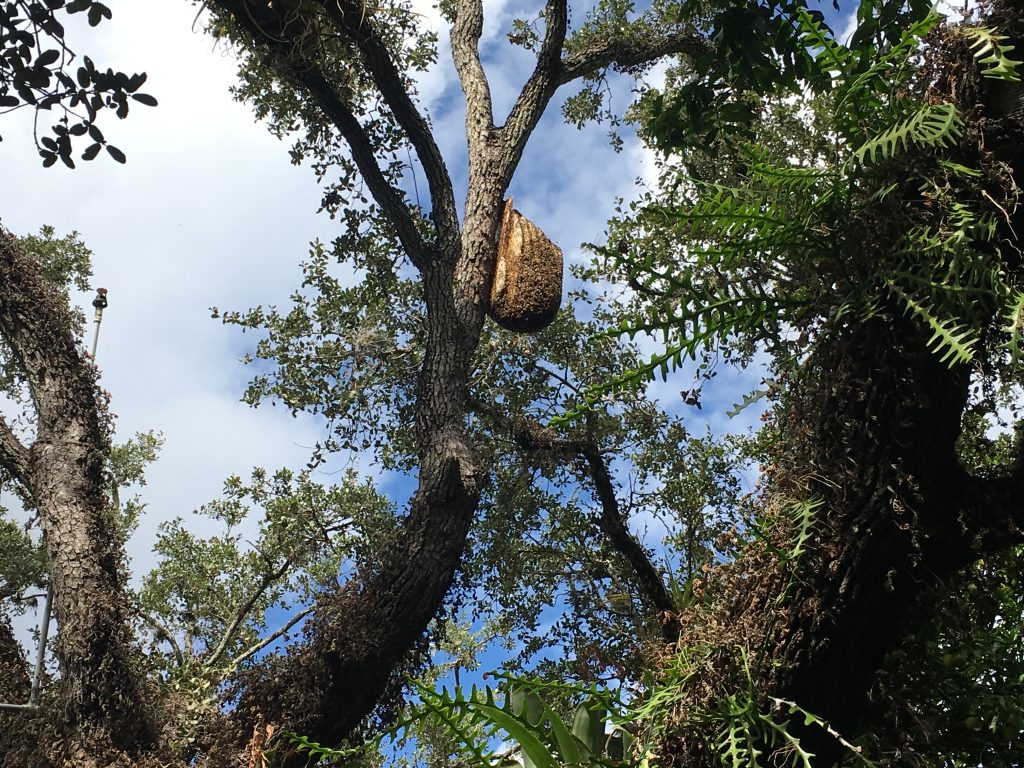
Hello bees and thanks for all the hard work
After a nice little stroll amongst the trees, we turned towards the house and immediate surroundings. The main house, called the “Fairchild-Sweeney House”, was built in 1928 and has a lovely oriental feel and look to it. The big room as you enter the courtyard, on your right, is the old living room of the house. Apparently, this room has seen many influential guests in its heyday, including Henry Ford and Thomas Edison. If walls could talk…
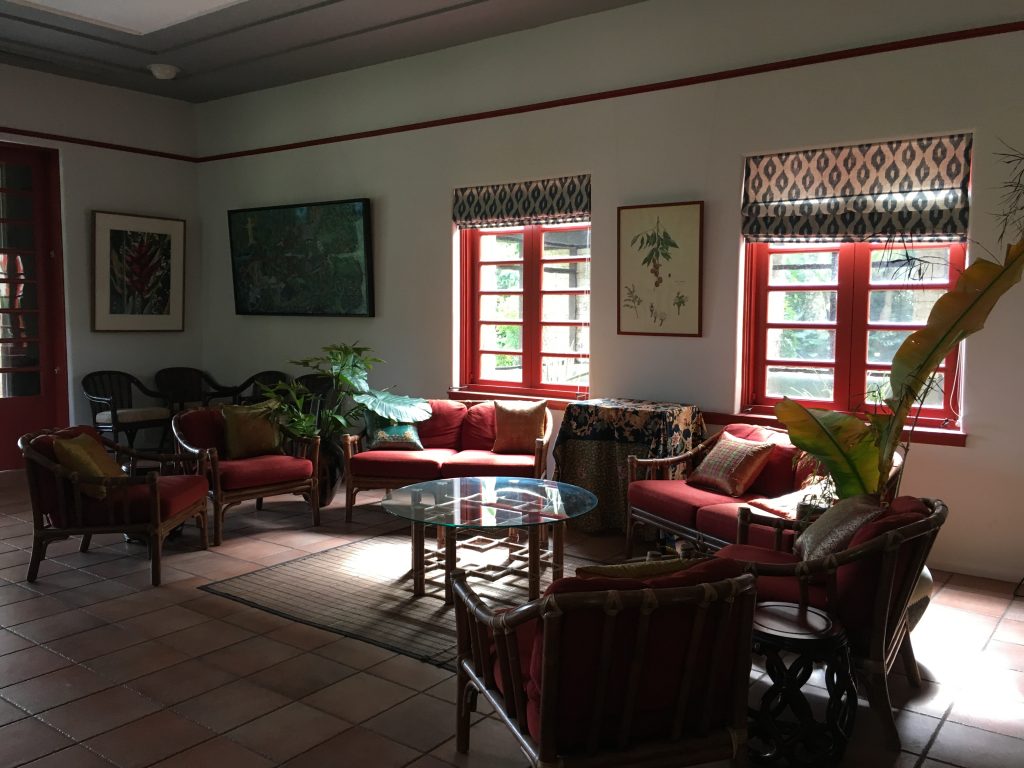
I particularly liked the pool of the property just outside the livingroom and patio area, with its big coral limestone boulders. It was a pretty hot day when we visited and I was so tempted to jump in, but dared not. I couldn’t help but stick my toes in it for a little relief, and it was nice and cool! Take note of the dugout canoe next to it.
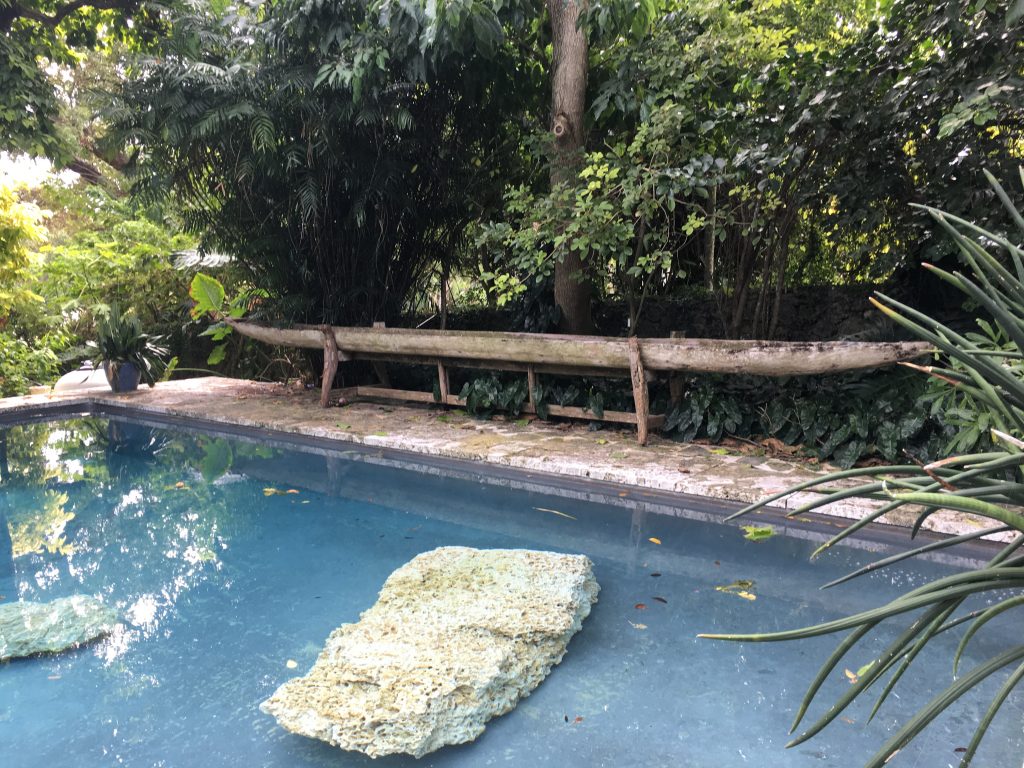
Found a dug-out canoe by the pool
Of course, the ocean always draws you in, so we quickly walked down the lawn heading towards “the point” on the bay, walking past an old tennis court and a natural mangrove preserve out to the dock.
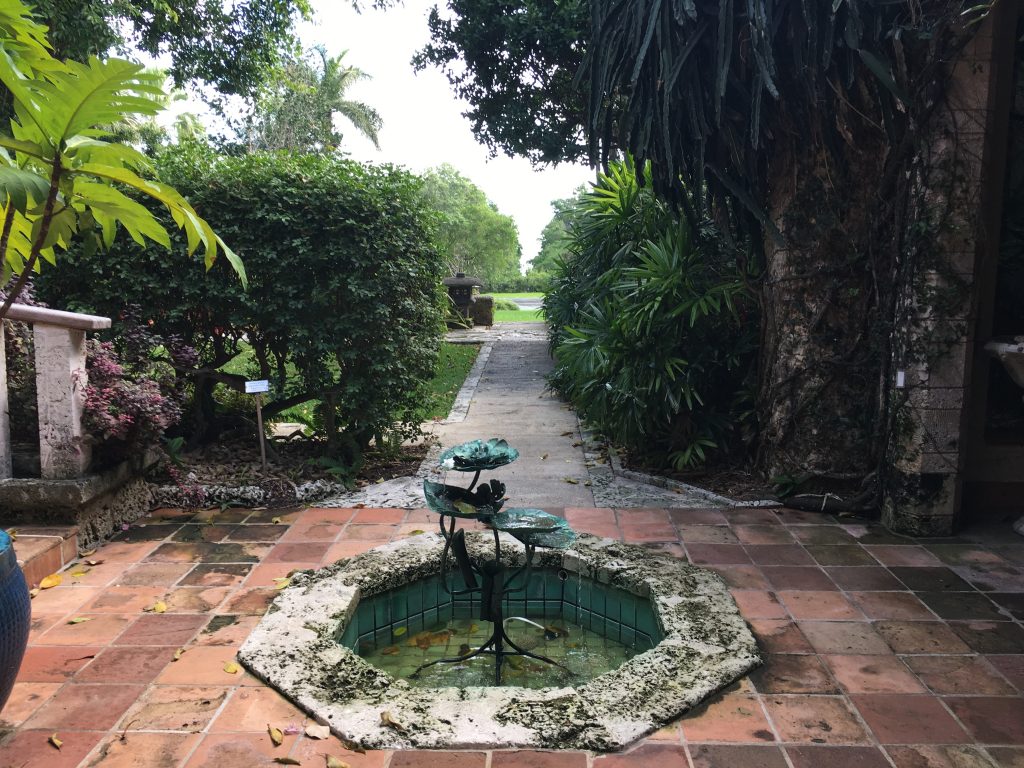
It is sad to me that this area with a little mangrove forest is supposedly one of the largest areas of saltwater mangrove forest left in this part of the coastline. The rest is pretty much gone and made way to the copious developments all around.
Consequently, animals find a rare little refuge in the area around the dock and inlet. We saw a grey big heron, fish and some pretty big and curious iguanas. According to The Kampong’s literature, you can see manatees and even the resident saltwater crocodile there.
We missed the manatees and crocodile, sadly. But you know how it is, the crocodile might have been just a few feet away from us, hiding and minding its own business..
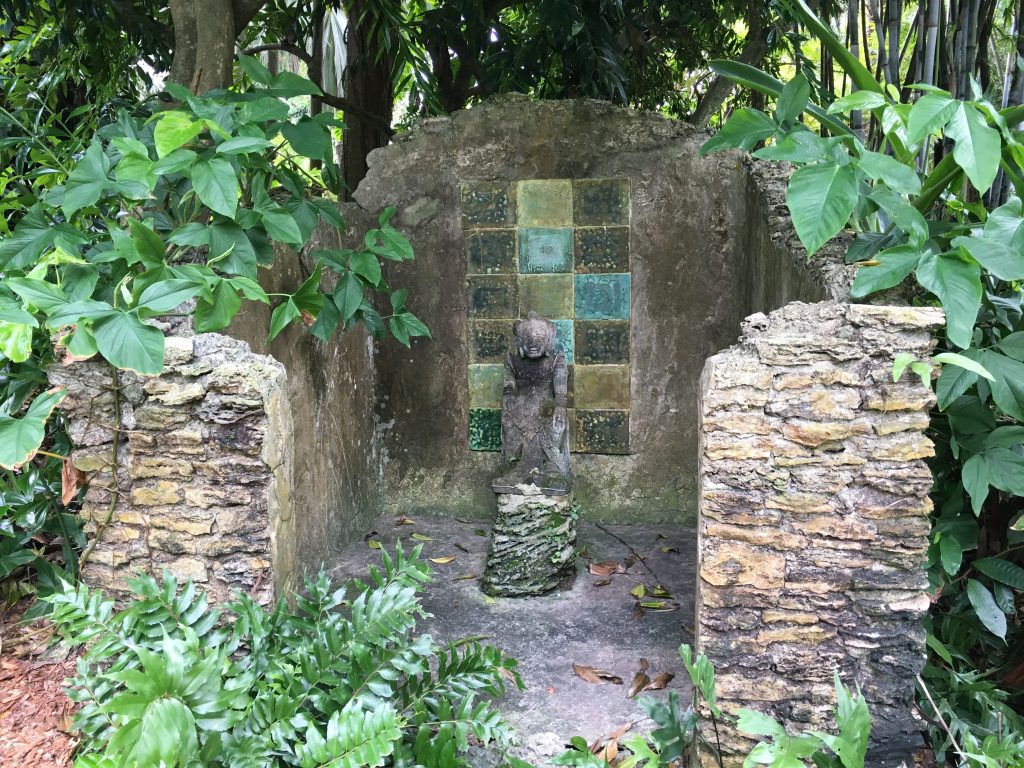
“The Shrine” converted from an outhouse (!) by David Fairchild
There are a few other buildings on the property, but most of them remain closed at least for the self-guided tours. You can see the outside of them, walking around. Some are used to house visiting scholars, such as the cute Barbour Cottage. The Galt Simmons building and David Fairchild Museum (on the second floor of the historic Galt Simmons building) are partly accessible through the guided tours – not the self-guided tours though.
The Galt Simmons building is one of the oldest buildings in the county. Dr. Eleanor Galt Simmons was the first female doctor in Miami-Dade. She tended to the local Miccosukee and early pioneers, riding around in a pony cart to her patients, if needed.
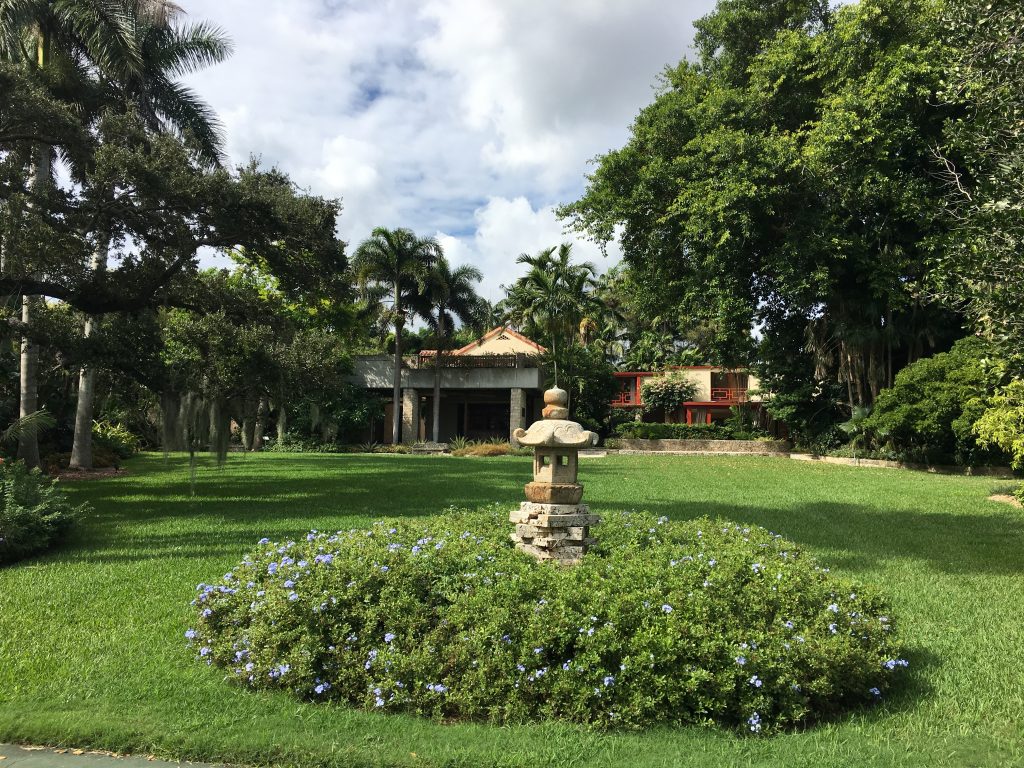
Planning Your Visit
At the time of writing, tickets are $15 per person for the self-guided tour and $20 per person for the guided tour.
Hours at The Kampong are as follows: Wednesday-Friday 9-5, Saturday 10-4. The Kampong is closed for all major holidays and encourages visitors to call ahead for their schedule.
Self-guided tours and guided tours are available, but please call ahead rather than just turn up as the schedule is subject to changes. All tours require advance reservation, call 305-442-7169. The Kampong is located at 4013 Douglas Rd, Miami, FL 33133.
They may ask you where you heard about them, please mention my blog 🙂
